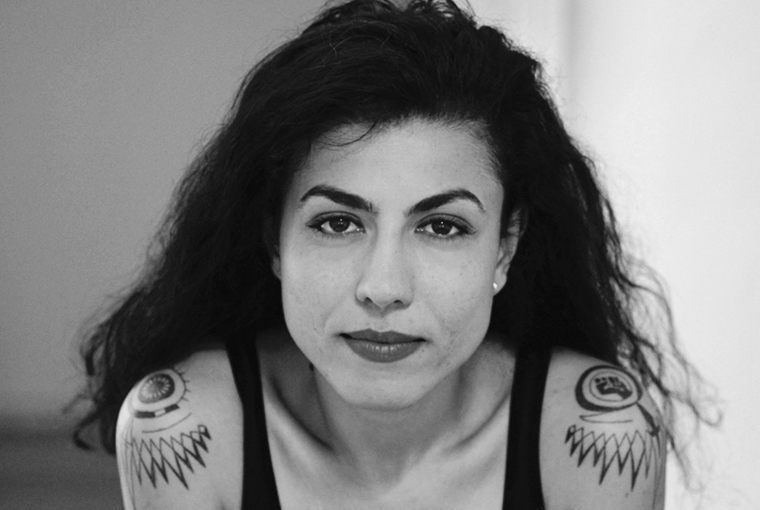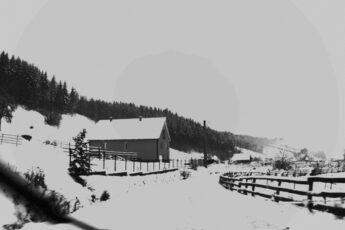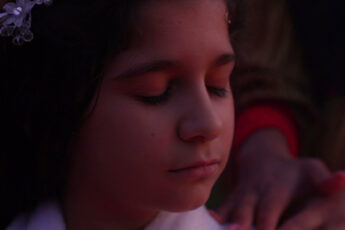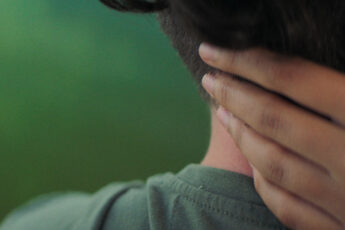Mihaela Drăgan on The Future is a Safe Place Hidden in my Braids
Vol. 134 (April 2023) by Anna Doyle
We met Mihaela Drăgan back in 2021 during the Bucharest Experimental Film Festival, where she had presented her debut “The Future is a Safe Place Hidden in my Braids”. The film subscribes to the notion of Roma futurism in an attempt to turn the attention forward and unleash the emancipatory potential of witchcraft. Drăgan discusses the origin of Roma futurism, how witchcraft is perceived in Romania and beyond, and how it relates to her understanding of feminism.
You are a playwright and actress active in the Roma community in Bucharest. What made you turn to cinema?
It happened during the pandemic when I couldn’t perform anymore. I felt the necessity to produce something that would fit in the new reality. I have been playing with the concept of Roma futurism for two or three years now, I’ve explored it in theater, music, performance art, so I felt it was the moment to also produce a film. And once I did, it was like a compromise. I explored it like a child would. In theater you work with your body and your mind, these are your instruments, but working cinematically is not the same thing, you create a story, it’s a puzzle. You have to put everything together to create the perfect story. The part I enjoyed most was the editing process. I also made another series of video artworks. I think I want to continue doing this.
In the film, there was an unusual mixture of the art of seeing the future and the struggle for emancipation – what link between emancipation and anticipation did you have in mind while pursuing the project?
Witchcraft and fortune-telling are forms of anticipation – and we Roma people aspire to emancipation as a community. We talk about this issue a lot. Roma futurism is a concept I began developing a few years ago in a moment when I felt the pressure to always talk about the oppressive past, as well as the persecution that we face in the present. I figured out that our community does not create art about the future. Roma art focuses on the past and the present, but we don’t make projections regarding our own future, we don’t have a vision. I felt the necessity to free myself from this pressure to create what the community expects from me, to solely deal with the unknown and unrecognized history that isn’t being taught or acknowledged. Rather, I felt like exploring science fiction and magic realism, which gave me a lot of freedom as an artist.
It all began during a residency in Hong Kong, where I was researching magical practices. When I came back, I met witches who are active in Romania. In Romania there is a stigma around witchcraft because it’s practiced by Roma women. In Hong Kong, everyone had their own spiritual guide and was interested in astrology – it was very common and almost seen as a science. Meanwhile, in Eastern Europe, Roma witches are seen as primitive, as a remnant from the past with no connection to modern technology. Actually, the Roma women I worked with for the movie use a lot of technology – they stream their rituals on social media, they have clients from abroad, they film themselves with their phones. They use gadgets and are super modern. I wanted to explore this idea with them. Above all, I wanted to combine the poetry of their spells, and the specific words they use for their spells with leftist political discourse. The idea was that we cannot talk about the future before healing the wounds of the past, the transgenerational trauma inherited from the ancestors who were victims of slavery and the Holocaust. Transgenerational trauma was a very important concept for me when I first discovered it – everything became clear when I heard that science could prove that pain could be transmitted genetically.
The film depicts a ritual that targets multiple traumas – the oppression of the Roma in the past, discrimination, racism, Holocaust, slavery. This ritual, was it your idea or the witches’ idea, and was it specifically contrived for the film?
Before filming the witches, I had had a period when I researched and spent time with them. I asked them, “What ritual do you use against fear, trauma?” I asked them, “What healing rituals do you use for people?” I wrote them down, and then rewrote them, specifically taking into account the Roma community and their multiple traumas. I said: “I want to see this meeting as a real exchange”, I said, “if you show me this beautiful ritual, then you can use this spell against discrimination, racism. And then perform it for the movie.” So, I rewrote everything, they learned the text and we made the movie. I invented this ritual in a way, but it was based on their practice, and they came up with a lot of ideas too.
In Shadows of Forgotten Ancestors, Sergei Paradjanov uses this technique of documenting rituals as an ethnographic work, and then proceeds to reinvent rituals for fiction. Now, regarding witchcraft, it is a very important new debate, especially in feminist circles and thought. How did you want to contribute to the debate?
Identifying as a witch is a feminist political act in and of itself. We have to take into consideration the whole history of witchcraft, how the women gatherings were seen as witchcraft, and how witches were punished. Philosopher Silvia Federeci wrote an amazing book that argues that the burning of witches was the origin of capitalism, which is a notion that inspired me a lot. These collective gatherings invoke the supernatural and magic as their only powers, powers that are feared by men. Reclaiming this part of our culture that is very stigmatized, undertaking the collective power of women, and finding cures for diseases in potions and herbalism are all part of this project. Throughout history, Romanian politicians had many discourses and measures targeting witches. For instance, they wanted to impose taxes on them.
The rituals are meant to exorcise traumas, and through their performative language, the witches actively counter stereotypes. What kind of stereotypes did you want to exorcise through your film?
In Romanian cinema, we always find the negative character of the Roma. Sometimes the character is presented with good intentions. It’s not enough though, as that is a patronizing move as well. They are usually represented as being very poor, the pity of the white audiences, and ultimately they are saved by a white person. We don’t have autonomy in cinematography. The poor Roma person is what we always see onscreen – uneducated, women are persecuted by their violent husbands and then saved by a white man who happens to be passing by during his travels. Children are seen as uneducated and poor. I wanted to show the pride of the witches, who are in control of their own destiny. Control is not an exterior force though – they can do whatever they want with their lives. Through witchcraft they have control, control over their oppressor.
The film has very rich imagery, amazing costumes, music, everything is colorful and flamboyant, it’s definitely not the image of the poor Roma woman. Were you consciously using cinema to debunk the myth of the poor Roma so as to influence our preconceptions?
Yes, these women care a lot about what they look like, they are very extravagant: their nails are done, they wear make-up. This is not the usual image of the Roma woman. Of course, there is poverty, but it is also as a result of stereotypes that we are solely being represented like that. I wanted to show powerful women and avoid this image of victimhood.
How do you situate the film in relation to the debate around intersectionality?
I identify as an intersectional feminist. My Roma theater company is the first Roma theater company from Romania. I created it along with other Roma actresses who identify as feminists. Everyone was shocked that they are both Roma and feminist! For me, collaborating with feminists, antiracists, and people questioning colonial principles is very important. However, I care about aesthetics also. In Romania, what is generally considered political art often lacks artistic value or an aesthetic vision. We don’t have as much money as a state production does, but it doesn’t mean I don’t care about performative resources or the aesthetics of the works. I am now preoccupied with this new concept: Roma futurism. It is a subversive force which will come to prevail in the future, even in the midst of fascist politics. The message is that we’ll exist in the future. Hence the title “The Future is a Safe Place Hidden in my Braids”, which is a metaphor for Roma women’s struggle for emancipation and for our fight to lift the community up and claim our rights.
Thank you for the interview.




Leave a Comment